- Home
- Glynn Stewart
Battle Group Avalon (Castle Federation Book 3) Page 3
Battle Group Avalon (Castle Federation Book 3) Read online
Page 3
Kyle considered, running the numbers. That was five hundred and fifty starfighters, which could be a problem if…
“Any class ID on the starfighters?” he asked. “We’re still looking at Scimitars?”
“Yes, sir,” Xue confirmed. “No sign of upgrades or modifications, either. They’re inbound at four hundred and fifty gravities. They launched missiles at roughly the same time—first salvos are still forty minutes out.”
Capital ship missiles—and the Commonwealth’s Stormwinds were almost identical to the Alliance’s Jackhammer in capabilities—had stupendous total ranges but only twice the acceleration of a starfighter. He checked the plot and inhaled sharply as he saw the numbers.
Five salvos of one hundred and twenty-six missiles were inbound. Six hundred plus missiles was a number he was more familiar with seeing associated with the far smaller and inferior fighter missiles, not all-up Stormwinds.
Silently, he checked on the command network. He had been linked into it since arriving on Avalon several minutes before, but several of the other captains hadn’t been. Finally, Lord Captain Bann of the Horus and his CAG clicked on.
“All of your ships have reported ready to my staff,” Rear Admiral Alstairs immediately noted over the neural link. “If anyone is not prepared for battle, this is your last opportunity.”
It would take a brave officer to retract the statement from their crew that their ship was ready for battle. If anyone wasn’t ready, they weren’t that brave, and the only answer to Alstairs’ question was silence.
“Good,” she continued crisply. “Vice Commodore Stanford, what is the status of our fighter wings?”
Even with the new ships, Avalon’s CAG was the senior starfighter officer in Seventh Fleet. Kyle had checked—both of the new Ursine carriers’ CAGs had been promoted to Vice Commodore even more recently than Stanford.
The officers of the new ships were all like that. Kyle had been a Captain for mere months, and they still looked so new, they squeaked to him—despite every last one of them being older than him, their promotions were weeks old.
The Reserve had two thirds as many ships as the active Castle Federation Space Navy had before the war—manning them all was a strain on the Navy’s personnel.
“All fighters are in the air and all squadrons are reporting in,” Stanford replied, several moments delay obvious as he coordinated with his new subordinates. “We have one hundred forty-four Arrows from the Imperials, ninety-six Templars from the RPN, and five hundred and ninety-two Falcons. These bastards are so screwed it isn’t even funny, ma’am.”
“I want a CSP held back to cover us from their missiles, CAG,” she ordered. “Your discretion—but I don’t want those Scimitars getting anywhere near my fleet.”
“Recommend we hold back the Arrows for fleet defense, ma’am,” the CAG replied immediately. “The Falcons can take these bastards on their own, but I get the feeling our Phoenix friends will complain if we don’t let them test their shiny new ships out.”
“Then go demonstrate why the Commonwealth really does need a seventh-generation starfighter, Vice Commodore,” Alstairs ordered. “All ships, forwarding you a formation now. Zheng He, I want your deflectors between the Terrans and our new ships. Everyone else, fall into place and move out after the starfighters.”
“Request permission to engage with missiles,” Captain Lora Aleppo, the Zheng He’s commander, asked. “If they’re shooting at us, I’d like to return the favor.”
“Agreed. All vessels, coordinate missile salvos with Captain Aleppo,” the Admiral confirmed. “Let’s be about it, people.”
Chapter 4
Alizon System
23:00 February 20, 2736 Earth Standard Meridian Date/Time
SFG-001 Actual—Falcon-C type command starfighter
Michael Stanford spent the only “quiet” thirty minutes of the flight studying the statistics on the Royal Phoenix Space Force’s new Templar-type starfighter. It was a smaller, lighter, spacecraft than his own Falcons, but still carried three missile launchers to the Falcon’s four and a heavier positron lance. They were weaker on electronic warfare but closer than the Imperial Arrow had been.
Given that the Templar was a triangular wedge, similar to but narrower than a Falcon, with two missile launchers on one side and one on the other, he suspected she may have had a missile launcher pulled and replaced with EW gear late in the design process—after, for example, the early deployment of the Arrow-types demonstrated the value of the Falcon’s electronic countermeasures.
Between his almost seven hundred starfighters, the space around his strike was an absolute mess of jamming. His own ships were communicating with each other by Q-Com and linked into Seventh Fleet’s sensors and Q-probes, allowing them to see clearly, but the Terrans were going to have a problem localizing them as targets.
Of course, the six hundred plus missiles about to flash past his starfighter strike at over ten percent of the speed of light were equally difficult to see. Capital ship missiles had the mass and the power budget to devote to powerful electronic countermeasures and didn’t need to worry about keeping their emitters intact for the long term.
“All right, people,” Michael said calmly over the all-ships link. “Remember, every missile we blow to hell is a missile that Seventh Fleet doesn’t have to worry about. One shot per salvo and then prep your missiles for our Scimitar friends. One full salvo and then lances.”
As a starfighter pilot, the Vice Commodore was in the top half percent of the human population for his ability to interface with computers via neural implants. It was this ability, and a slew of supporting low-level artificial intelligences and drones, that allowed a crew of three to control an eight-thousand-ton spaceship wrapped around multiple zero point energy cells and antimatter rockets.
“Kayla, prep the missiles for the fighter intercept,” he ordered Kayla Arnolds, his starfighter’s fair-haired gunner. “I’ll handle the positron lance for the missiles.”
He barely had enough time to hear Lieutenant Arnolds’ acknowledgement before the missile swarm was on them and the Falcon’s single fifty-kiloton-per-second positron lance spun up.
The starfighter’s power readings spiked as the zero point energy cell at the core of the lance spun up, electrons being pulled off into the ship’s power grid while positrons fed into specially designed capacitors.
The weapon charged over about a third of a second, accumulating enough captured positrons to feed the beam—and then Michael released that energy into space. The Stormwinds were throwing out enough jamming that his computer was only throwing up probability zones for missile locations, so he aligned the lance with a spot where several zones overlapped and fired.
He slashed through space with a single three-second pulse of positrons and hit nothing. Even with almost seven hundred beams cutting through space, most of them missed—but not all. Dozens of massive fireballs lit up the Alizon system as containment failed on one-gigaton antimatter warheads—or on the missiles’ antimatter fuel tanks.
Moments later, Michael’s command starfighter trembled as it blasted through the expanding field of debris and radiation. The mass manipulators that compensated for acceleration reduced the turbulence, but it was still a rocky ride.
Then they were clear—and closing on the second wave of missiles. There was less time for the computers across the starfighter strike to resolve targets and calculate probability zones—leaving where to fire almost entirely up to instinct.
Instinct was why there were still humans aboard a starfighter—and while Michael Stanford almost certainly wasn’t the best pilot in the seven hundred ships he led to war, he was definitely one of the better ones.
He let instinct take over, dodging and weaving through four more salvos of missiles. Twice, his slashing cuts through space caught a missile, detonating it in a blast of pure white fire and radiation as dozens of its brothers died around it.
Finally, they were through—and a good third of the miss
iles the Terrans had launched were gone. The remaining four hundred were the CSP’s problem now—and Michael turned his attention to his strike.
“Report, did we lose anyone?” he demanded, skimming his tactical plot.
The Wing Commanders from Avalon’s group and Camerone reported first, knowing exactly what he’d want to know. The CAGs for the new ships took a moment to confirm with their own subordinates before responding to him, but thirty seconds after clearing the last missile salvo, he’d confirmed all six hundred and eighty-eight starfighters were intact and with him.
A few had radiation damage, lost sensors and such, but the Q-Com network linking the entire strike together could easily make up for that. They had seven minutes now before they were in missile range of the Terran fighters.
“All ships, prep one full salvo of missiles,” he ordered. “We have them outnumbered and I want to save the birds for the capital ships. Take any that survive the salvo with lances.” He glanced at the Templar’s specifications again and came to an instant conclusion. “Phoenix ships, hold your lance fire until the Falcons are in range. Everything these guys see, Walkingstick’ll know. Let’s not tell him anything he hasn’t learned yet, shall we?”
Chuckles answered him. Q-Coms worked both ways—the same tech that allowed a probe hanging sixty thousand kilometers away from the Commonwealth Task Force in Alizon to tell Seventh Fleet what the Terrans were doing in real time; also allowed Marshal James Walkingstick, the supreme commander of the Commonwealth offensive, to know exactly what was going on in the same timeframe.
Timers flashed up in Michael’s mental displays. A little over four minutes to missile range—over four and a half million kilometers at this closing velocity. One hundred and fifty seconds for the missiles to reach their targets—and fifty seconds after that for the Falcons to reach lance range of any survivors.
The Commonwealth missiles would reach Seventh Fleet over a minute before any of that…
23:07 February 20, 2736 ESMDT
DSC-078 Avalon, Bridge
Avalon’s bridge was quiet. Kyle’s displays showed him half a dozen side conversations taking place via the neural links, but no one was speaking aloud as they watched the waves of missiles sweep in toward Seventh Fleet.
The starfighters had done better than he’d expected. Out of the six hundred and eighty missiles the Terrans had launched, only four hundred and eight had survived passing Seventh Fleet’s starfighters. Even as the Stormwinds had blown past the fighter strike, the Arrows they’d kept with Seventh Fleet had opened fire with their own missiles in interceptor mode.
The Arrows’ design had proven to have flaws in combat, especially compared to the Falcons with their far heavier electronic warfare capabilities, but they still carried six missile launchers apiece. For every Stormwind closing on the Alliance fleet, their defending starfighters flung two missiles back at them.
Space was filled with antimatter explosions as the missiles salvos intersected. This kind of head-on intercept was inefficient at best, but it made for one hell of a show as collisions and proximity kills took out missile after missile.
With a practiced eye, Kyle realized that none of the first few waves were going to make it through the Imperial starfighters’ defensive fire. The later waves would have to survive the newly created temporary belt of radiation and debris in their path, but some would still make it through.
“Target all lances and defensive lasers on missiles waves three through five,” he ordered. “I’m taking any scratches on the hull out of your pay!”
The quiet dissolved into surprised chuckles, and Avalon’s Captain smiled to himself. The Commonwealth had no idea what kind of fight they’d picked.
23:11 February 20, 2736 ESMDT
SFG-001 Actual—Falcon-C type command starfighter
The Terrans were in range a fraction of a second before Michael’s people, and the icons of the closing Scimitars vanished behind a solid wall of missile threat icons. Each of the four hundred and fifty Scimitars launched four Javelin starfighter missiles into space, sending eighteen hundred missiles blasting towards his people at a thousand gravities.
Even as Seventh Fleet’s CAG noted the numbers and presence of the enemy missiles, the Vice Commodore felt his own ship tremble as Kayla Arnolds returned the favor. Four Starfire missiles launched from each of his Falcons, plus three from each Templar—sending over twenty-six hundred missiles back at the Terrans.
“Missile defenses online,” Michael’s engineer confirmed over their in-ship link. “Lasers cycling at one hundred and three percent designed efficiency, ECM emitters at full power.”
The two massive formations of starfighters lunged at each other through space, their missiles closing the distance between them at twice the acceleration of the fastest starfighters. Emitters threw jamming and deceptive siren songs into space, luring missiles off-course or onto perfectly straight, easy-to-intercept, courses.
The Falcons and Templars did a far better job of confusing the missiles than the Scimitars did—but where the Alliance ships had launched a single salvo of missiles, the Commonwealth fighters launched three.
Michael left guiding his missiles in to his gunner and focused on keeping the starfighter alive. Even keeping a part of his mind on the big picture, most of his attention sucked down to the plain and simple task of “do not die’.
A tsunami wave of explosions reached across space, the deaths of the incoming weapons only helping to hide the survivors. He spun the starfighter through a series of spiraling pirouettes to throw off the missiles, even as his engineer fired lasers again and again.
“We have kills!” Kayla announced. “Multiple impacts, my Gods—their entire formation looks like it’s on fire.”
Even the complete annihilation of the Commonwealth fighter group wouldn’t save the Alliance craft from the missiles already on their way. A second salvo burned in even as they neared positron lance range, and the jammers continued their song as the lasers reaped their harvest.
“Lance range in ten seconds,” he snapped across the network. “Fire at two-twenty-five.”
He spun his Falcon sideways, a burst of thrust added to by the force of the explosion he barely dodged. The doughty little ship took no serious damage—and they were in range.
Hundreds of positron lances flashed into space, beams of pure antimatter cutting across the distance between the two formations at nearly lightspeed…and missing. The range was right for the strength of electromagnet deflector fields the Scimitars were supposed to have, but…
“Shit!” someone bellowed on the command channel. “They’ve upgraded their deflectors!”
“Won’t save them,” Michael reminded his people. “Those Scimitars have crap for lances; sustain fire until you hit!”
Their intercept speed was almost eight percent of the speed of light. The conversation flashed through the neural links in fractions of a second—and the range kept dropping as they thought at each other.
Two seconds passed. The Templars, with their more powerful lances, started burning through. There were only a handful of Scimitars left, now scattering to try to evade the solid hammer of the Alliance formation—scattering in vain.
At one hundred eighty thousand kilometers, the Falcons finally found the range. Eight seconds later, Seventh Fleet’s starfighters blasted past the wreckage of their enemies.
“Who’s left?” Michael finally asked, able to breathe for a few minutes as they cleared. “Who did we lose?”
The answers came in faster this time—and were stunning. Four Falcons, all from the new carriers, and two Templars. The emergency pods on all six had managed to trigger, though that was no guarantee of survival in a high-radiation combat environment.
The Commonwealth fighters, upgraded or not, had been outnumbered and outclassed.
“Sir,” Arnolds interjected. “I think we spooked them—their capital ships are turning!”
Chapter 5
Alizon System
23:15 February 20, 2736 Earth Standard Meridian Date/Time
DSC-078 Avalon, Bridge
Kyle breathed a sigh of relief that was probably audible across the entire bridge when the last missile died several thousand kilometers short of even the fighter screen. Capital ship missiles were smart, and even having been gutted by Stanford’s people, one could have made it through—and one hit would cripple any ship in the fleet.
“Sir, Q-probes report the Commonwealth ships are turning,” Xue announced. “Ninety-degree vector shift perpendicular to the ecliptic, pushing to emergency acceleration: two hundred and thirty gravities.”
“I guess they decided they don’t want to play our game,” Kyle murmured, running the numbers. Two hundred and thirty gees was an expensive game for the older ships in the Commonwealth force. They could do it, but their standard acceleration was set as much by their fuel efficiency as anything else.
Thanks to the mass manipulators woven throughout the Terran ship, they could increase the mass of their exhaust, decrease the mass of the ship, and create gravity fields to compensate against those hundreds of gravities—but at a price. Right now, the older ships would be burning several minutes’ worth of fuel for normal acceleration for every minute they ran the higher accel. But… He crunched the numbers and sighed.
“Xue, Anderson,” he said quickly. “Check my math—when can they go to Alcubierre-Stetson?”
His XO and tactical officer ran through the same numbers he had and he compared all three results.

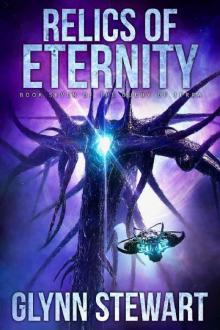 Relics of Eternity (Duchy of Terra Book 7)
Relics of Eternity (Duchy of Terra Book 7)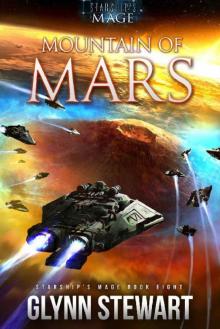 Mountain of Mars
Mountain of Mars Wardtown (Teer & Kard Book 1)
Wardtown (Teer & Kard Book 1) Noble's Honor (Changeling Blood Book 3)
Noble's Honor (Changeling Blood Book 3)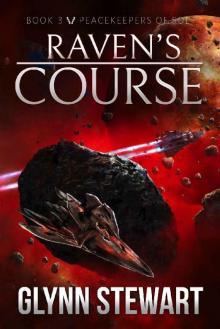 Raven's Course (Peacekeepers of Sol Book 3)
Raven's Course (Peacekeepers of Sol Book 3)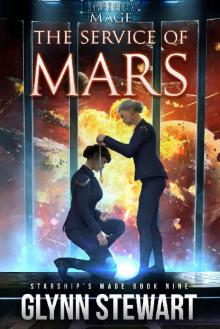 The Service of Mars
The Service of Mars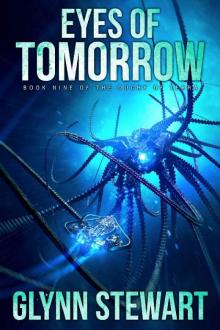 Eyes of Tomorrow (Duchy of Terra Book 9)
Eyes of Tomorrow (Duchy of Terra Book 9) Darkness Beyond (Light of Terra: a Duchy of Terra series Book 1)
Darkness Beyond (Light of Terra: a Duchy of Terra series Book 1)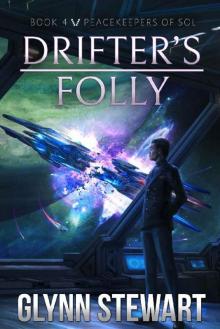 Drifter's Folly (Peacekeepers of Sol Book 4)
Drifter's Folly (Peacekeepers of Sol Book 4) Conviction (Scattered Stars: Conviction Book 1)
Conviction (Scattered Stars: Conviction Book 1)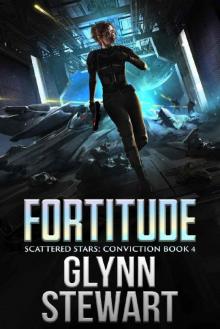 Fortitude (Scattered Stars: Conviction Book 4)
Fortitude (Scattered Stars: Conviction Book 4)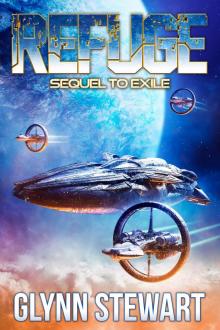 Refuge
Refuge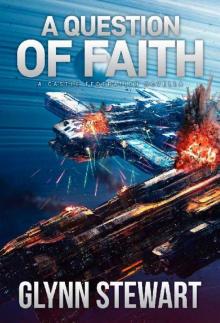 A Question of Faith: A Castle Federation Novella
A Question of Faith: A Castle Federation Novella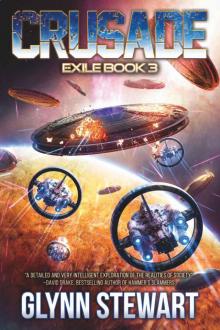 Crusade (Exile Book 3)
Crusade (Exile Book 3)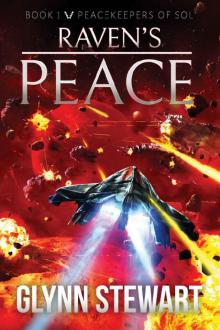 Raven's Peace
Raven's Peace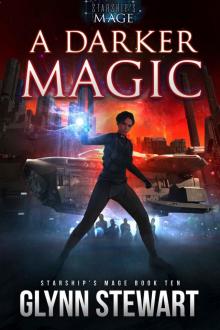 A Darker Magic (Starship's Mage Book 10)
A Darker Magic (Starship's Mage Book 10)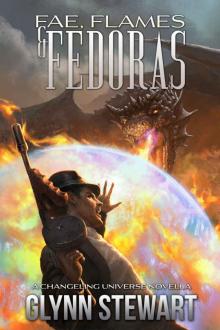 Fae, Flames & Fedoras
Fae, Flames & Fedoras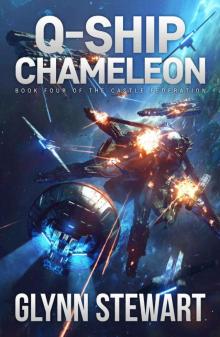 Q-Ship Chameleon
Q-Ship Chameleon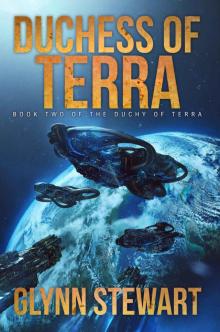 Duchess of Terra (Duchy of Terra Book 2)
Duchess of Terra (Duchy of Terra Book 2)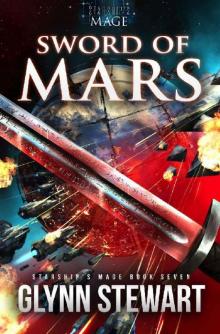 Sword of Mars
Sword of Mars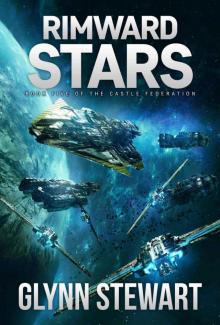 Rimward Stars (Castle Federation Book 5)
Rimward Stars (Castle Federation Book 5)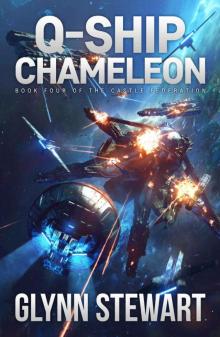 Q-Ship Chameleon (Castle Federation Book 4)
Q-Ship Chameleon (Castle Federation Book 4)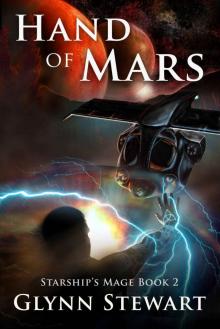 Hand of Mars (Starship's Mage Book 2)
Hand of Mars (Starship's Mage Book 2)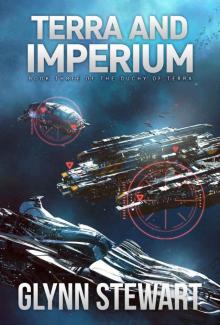 Terra and Imperium (Duchy of Terra Book 3)
Terra and Imperium (Duchy of Terra Book 3)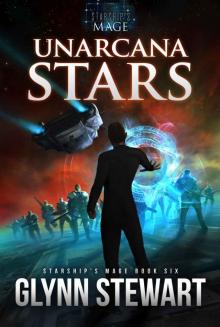 UnArcana Stars
UnArcana Stars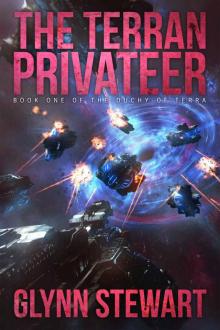 The Terran Privateer
The Terran Privateer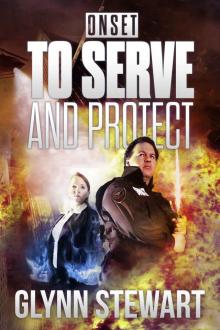 ONSET: To Serve and Protect
ONSET: To Serve and Protect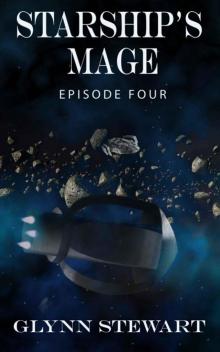 Starship's Mage: Episode 4
Starship's Mage: Episode 4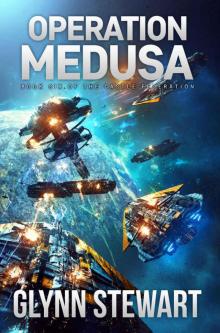 Operation Medusa (Castle Federation Book 6)
Operation Medusa (Castle Federation Book 6) ONSET: Blood of the Innocent
ONSET: Blood of the Innocent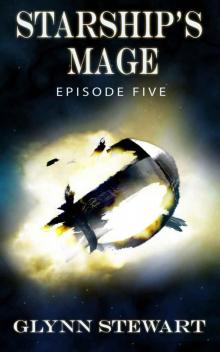 Starship's Mage: Episode 5
Starship's Mage: Episode 5 Hunter's Oath
Hunter's Oath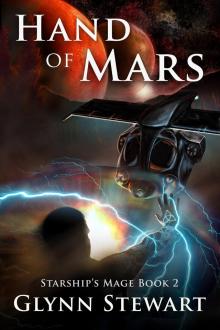 Starship's Mage 2 Hand of Mars
Starship's Mage 2 Hand of Mars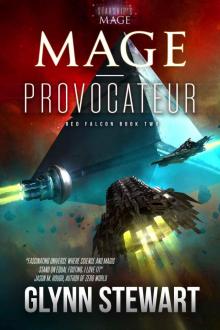 Mage-Provocateur (Starship's Mage: Red Falcon Book 2)
Mage-Provocateur (Starship's Mage: Red Falcon Book 2) ONSET: My Enemy's Enemy
ONSET: My Enemy's Enemy Blood Ward
Blood Ward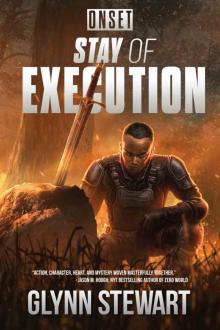 ONSET: Stay of Execution
ONSET: Stay of Execution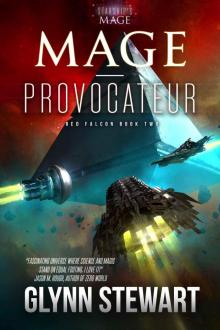 Mage-Provocateur
Mage-Provocateur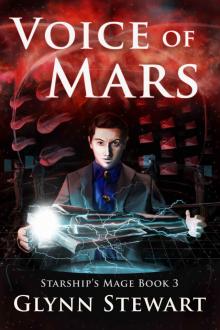 Voice of Mars (Starship's Mage Book 3)
Voice of Mars (Starship's Mage Book 3) ONSET (Book 4): Stay of Execution
ONSET (Book 4): Stay of Execution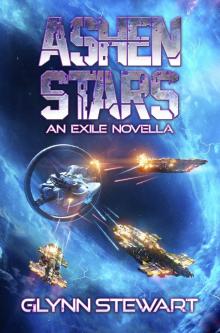 Ashen Stars
Ashen Stars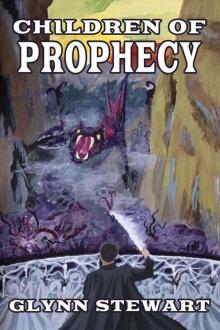 Children of Prophecy
Children of Prophecy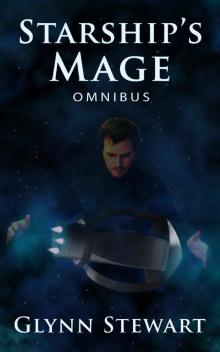 Starship's Mage: Omnibus: (Starship's Mage Book 1)
Starship's Mage: Omnibus: (Starship's Mage Book 1)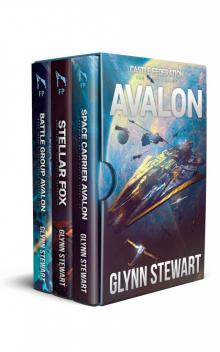 Avalon Trilogy: Castle Federation Books 1-3: Includes Space Carrier Avalon, Stellar Fox, and Battle Group Avalon
Avalon Trilogy: Castle Federation Books 1-3: Includes Space Carrier Avalon, Stellar Fox, and Battle Group Avalon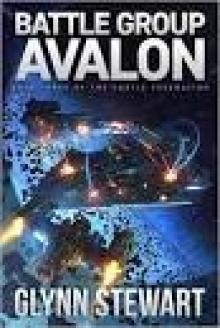 Battle Group Avalon (Castle Federation Book 3)
Battle Group Avalon (Castle Federation Book 3)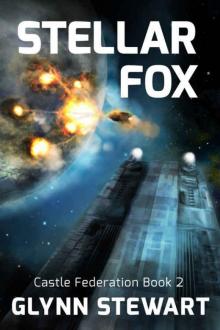 Stellar Fox (Castle Federation Book 2)
Stellar Fox (Castle Federation Book 2)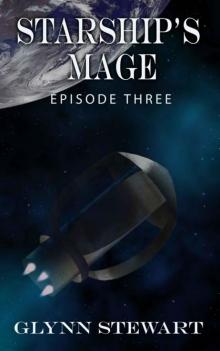 Starship's Mage: Episode 3
Starship's Mage: Episode 3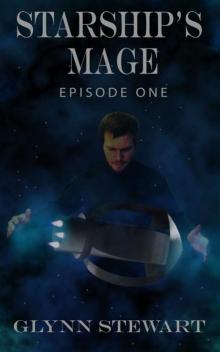 Starship's Mage: Episode 1
Starship's Mage: Episode 1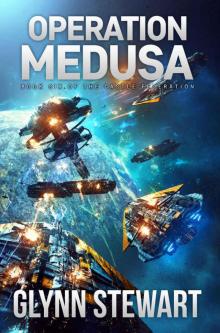 Operation Medusa
Operation Medusa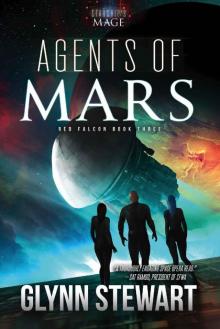 Agents of Mars (Starship's Mage: Red Falcon Book 3)
Agents of Mars (Starship's Mage: Red Falcon Book 3)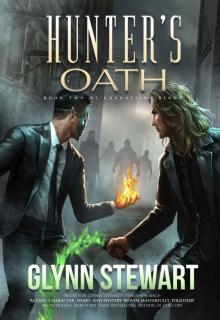 Hunter's Oath (Changeling Blood Book 2)
Hunter's Oath (Changeling Blood Book 2)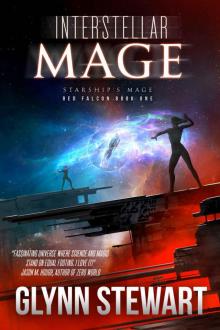 Interstellar Mage (Starship's Mage: Red Falcon Book 1)
Interstellar Mage (Starship's Mage: Red Falcon Book 1) Judgment of Mars (Starship's Mage Book 5)
Judgment of Mars (Starship's Mage Book 5) Alien Arcana (Starship's Mage Book 4)
Alien Arcana (Starship's Mage Book 4)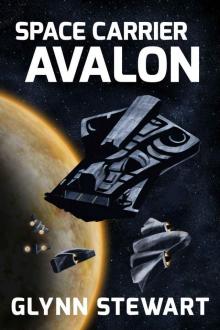 Space Carrier Avalon
Space Carrier Avalon Changeling's Fealty (Changeling Blood Book 1)
Changeling's Fealty (Changeling Blood Book 1)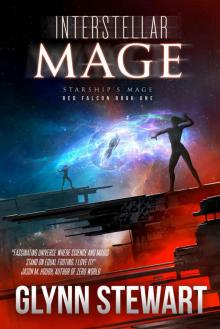 Interstellar Mage
Interstellar Mage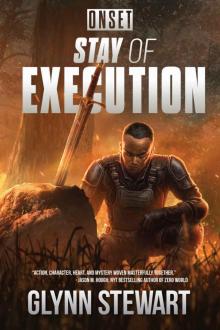 Stay of Execution
Stay of Execution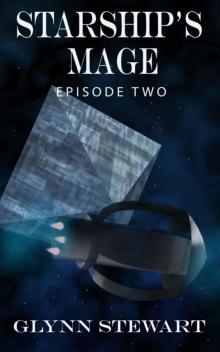 Starship's Mage: Episode 2
Starship's Mage: Episode 2